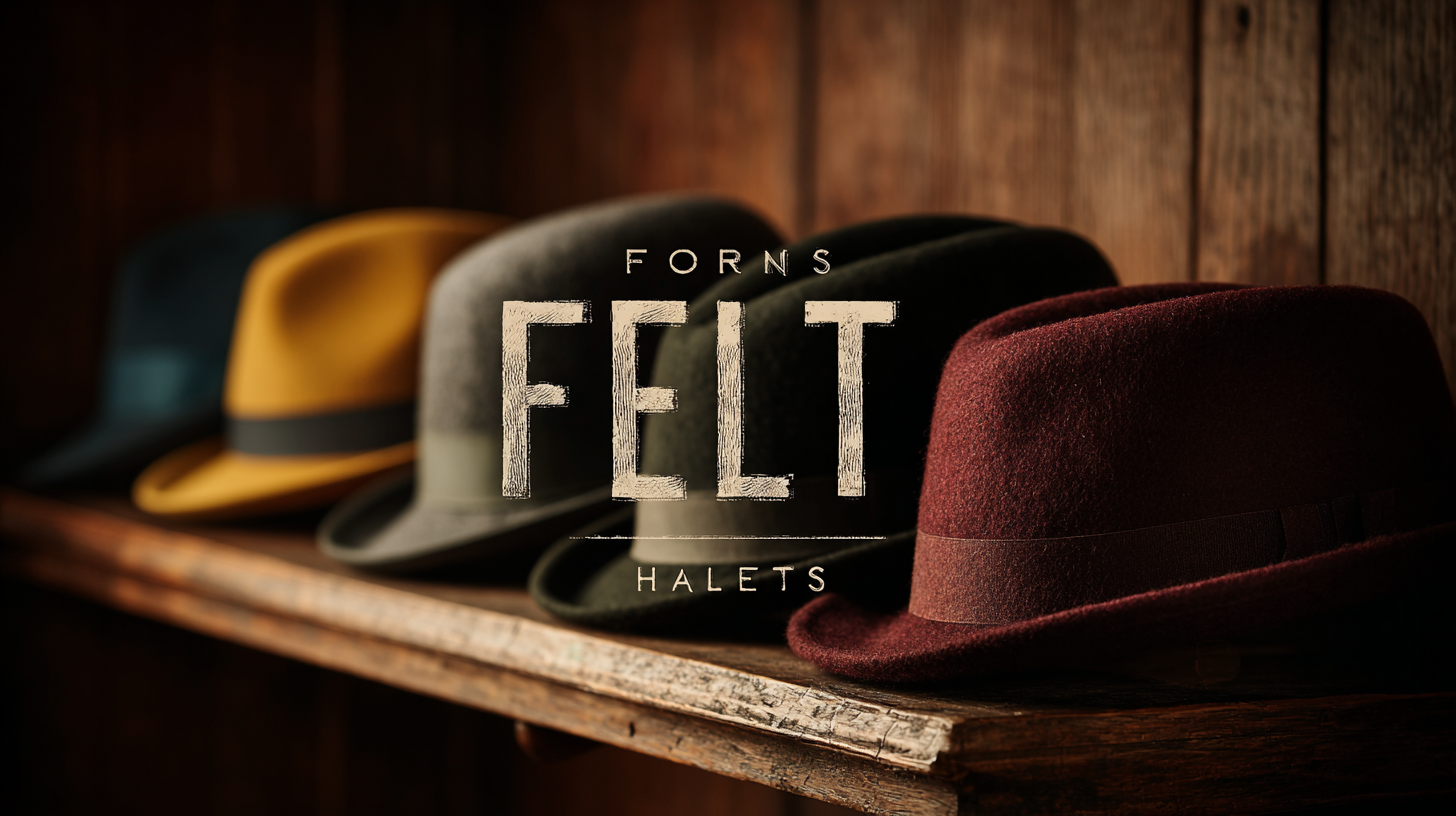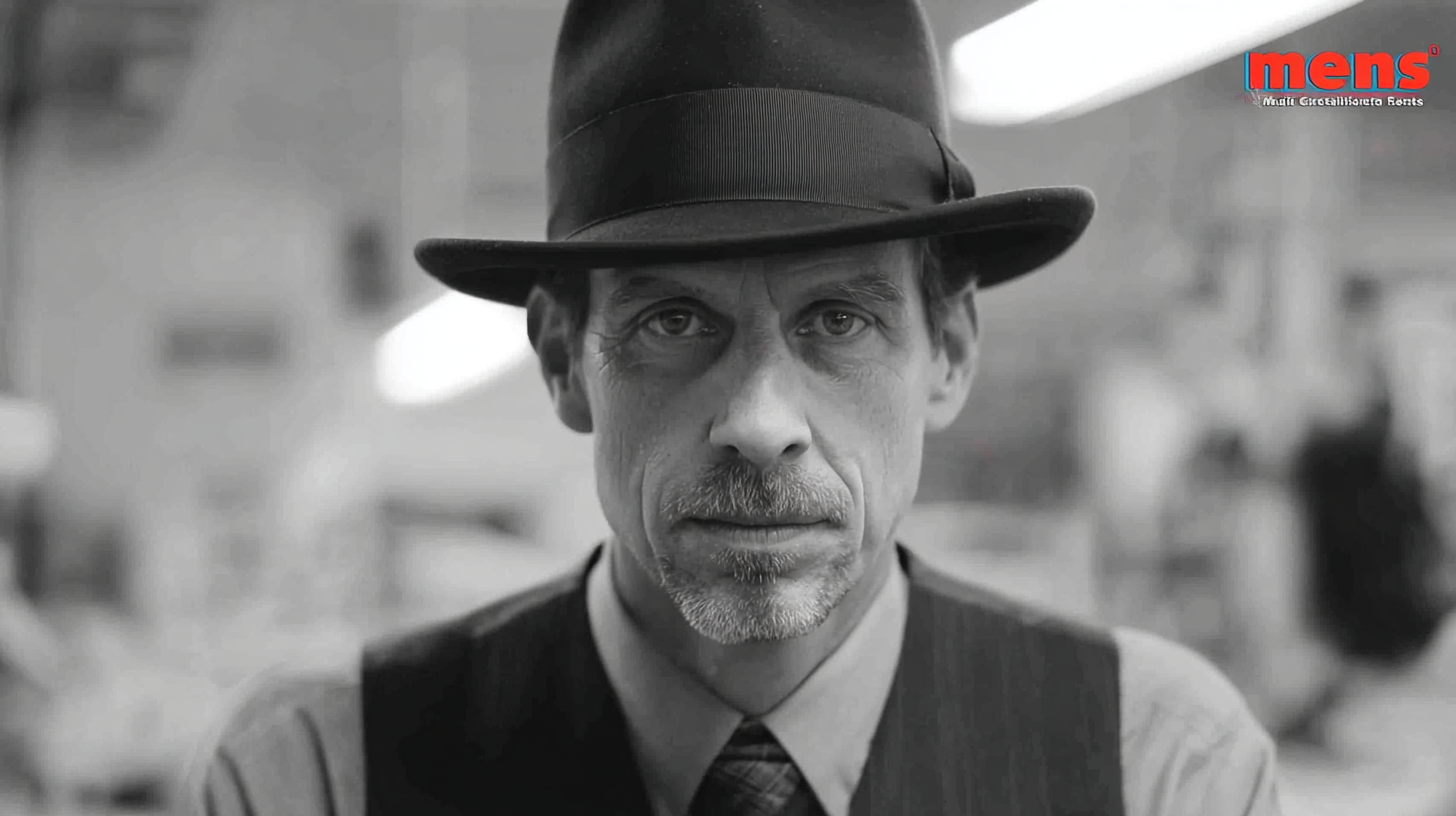Understanding Industry Standards and Challenges in Production of Best Mens Felt Hats
The production of mens felt hats has become an integral part of the fashion accessories market, with the global felt hats segment expected to reach approximately $1.2 billion by 2025, driven by evolving consumer preferences and the resurgence of classic styles. Despite the growing demand, manufacturers face several challenges in adhering to industry standards related to material quality, sustainability, and labor practices. Reports indicate that up to 60% of felt hat producers struggle with sourcing eco-friendly materials, as consumers increasingly prioritize sustainable fashion. Additionally, the competitive landscape poses significant hurdles, with over 40% of small businesses citing difficulty in meeting quality standards while keeping production costs low. Understanding these dynamics is crucial for stakeholders aiming to thrive in the mens felt hats sector, as it not only impacts product quality but also dictates market positioning and brand integrity.

Key Industry Standards for High-Quality Men's Felt Hats
When it comes to crafting high-quality men's felt hats, adhering to established industry standards is essential. Notably, the American Felt and Filter Manufacturers Association (AFFMA) has set forth guidelines that delineate the quality parameters for felt production. According to a recent report, nearly 65% of hat consumers prioritize durability and texture, which underscores the necessity of using premium raw materials. Felt made from 100% wool not only offers superior water resistance but also provides the structural integrity that is crucial for maintaining the hat’s shape over time.
Moreover, the fabrication process plays a pivotal role in achieving industry standards. Specialized manufacturers often implement techniques such as carding and felting to enhance the hat's overall quality. A study indicated that hats produced with traditional methods exhibit a 30% lower rate of wear and tear compared to mass-produced counterparts. In addition to durability, factors like colorfastness and breathability are critical, as nearly 75% of consumers expressed concerns regarding fading and discomfort. Thus, understanding these standards and challenges is vital for producing the best men's felt hats that meet consumer expectations and industry benchmarks.
Understanding Industry Standards and Challenges in Production of Best Men's Felt Hats
| Standard Criteria | Description | Challenges | Recommended Quality Measures |
|---|---|---|---|
| Materials Used | Quality natural fibers such as Merino wool or rabbit fur | Sourcing high-quality materials | Establish strong supplier relationships |
| Craftsmanship | Attention to detail in shaping and finishing | Skill levels of workers | Ongoing training programs for artisans |
| Sizing Standards | Standardized sizes to ensure proper fit | Variability in head sizes | Flexible sizing options and customization |
| Durability Tests | Resistance to water and wear | Maintaining quality during wear and usage | Implementing robust testing protocols |
| Sustainability Practices | Environmentally friendly production techniques | Balancing cost and eco-friendly methods | Investing in sustainable materials and processes |
Common Challenges Faced in Felt Hat Production
In the felt hat production industry, several common challenges hinder manufacturers from delivering high-quality products while maintaining efficiency. One significant issue is the fluctuation in raw material prices, particularly wool and felt, which can affect production costs and, subsequently, retail prices. According to industry reports, changes in agricultural practices and global market demands have led to a 15% increase in raw material costs over the past two years. This spike places pressure on producers to either absorb costs or pass them onto consumers, impacting competitiveness in the marketplace.

Moreover, technological advancements pose both opportunities and challenges in felt hat production. While automation can enhance production efficiency, many traditional manufacturers face difficulties in integrating new technologies without sacrificing craftsmanship. As noted in recent studies, about 40% of established hat makers struggle to adapt their production processes in response to evolving consumer preferences for sustainability and bespoke designs. The growing emphasis on eco-friendliness also presents challenges, as producers must find sustainable sources of materials and eco-conscious methods of production, a task complicated by the existing supply chain issues heightened during the pandemic.
Innovative Techniques for Improving Felt Hat Durability
In the competitive world of menswear, the production of high-quality felt hats stands out as an art form that marries tradition with innovation. As manufacturers strive to meet growing consumer demands for durability and style, innovative techniques are becoming essential in the production process. One significant advancement is the use of synthetic blends in felt materials, which enhances strength without compromising the luxurious feel of natural fibers. This not only prolongs the life of the hats but also offers versatility in design and color options, appealing to a broader audience.
Furthermore, modern manufacturing techniques such as laser cutting and advanced thermal treatments allow for precise shaping and finishing of felt hats. These methods ensure uniformity in quality while minimizing waste, aligning with sustainability practices that are increasingly important to consumers today. By adopting these innovative approaches, producers can create hats that not only withstand the test of time but also meet the high aesthetic standards that today's fashion-savvy consumers expect. The blending of traditional craftsmanship with cutting-edge technology is paving the way for a new era in felt hat production, promising a brighter future for this timeless accessory.
Durability of Men's Felt Hats: Industry Standards and Challenges
This chart illustrates the durability scores of various industry standards for men's felt hats. Standard D shows the highest durability, while Standard B falls behind, highlighting the variability in quality among different production techniques.
Tips for Selecting the Right Materials and Suppliers
When it comes to producing the best men's felt hats, selecting the right materials and suppliers is crucial for achieving quality and sustainability. The modern industry faces challenges such as maintaining supply chain transparency and adapting to evolving consumer expectations. As the competition intensifies, particularly with emerging global players, careful consideration of material sources becomes paramount.

One essential tip for selecting materials is to prioritize sustainability. Opt for felt made from natural fibers, such as wool or alpaca, which not only provide durability but also reduce environmental impact. Additionally, evaluate potential suppliers based on their commitment to sustainable practices and ethical labor, ensuring that the production process aligns with your brand’s values.
Another important factor is innovation in design and manufacturing processes. Collaborate with suppliers who leverage advanced technologies to enhance production efficiency and product quality. This partnership can lead to innovative solutions that meet contemporary market demands while keeping production costs manageable. Ultimately, choosing the right materials and suppliers sets the foundation for crafting superior felt hats that resonate with discerning consumers.
Trends Influencing the Men's Felt Hat Market Today
The men’s felt hat market is experiencing a resurgence, driven by a combination of fashion trends and practical considerations. One significant trend is the growing appreciation for sustainable materials. Consumers are increasingly concerned about the environmental impact of their purchases, prompting manufacturers to explore eco-friendly felt options and ethical production practices. This shift not only caters to the modern buyer’s values but also enhances brand loyalty among environmentally conscious consumers.
Additionally, the influence of social media and celebrity endorsements cannot be overlooked. As fashion influencers showcase their unique styles online, felt hats have emerged as a versatile accessory that can elevate any outfit. Men are seeking ways to personalize their wardrobe, and hats are becoming a statement piece in many ensembles.
Tip: When selecting a felt hat, consider your face shape and personal style. A well-fitted hat can not only enhance your appearance but also boost your confidence.
Keeping an eye on seasonal styles is also essential. As trends ebb and flow, opting for classic shapes complemented by modern colors can ensure that your purchase remains relevant year after year.
